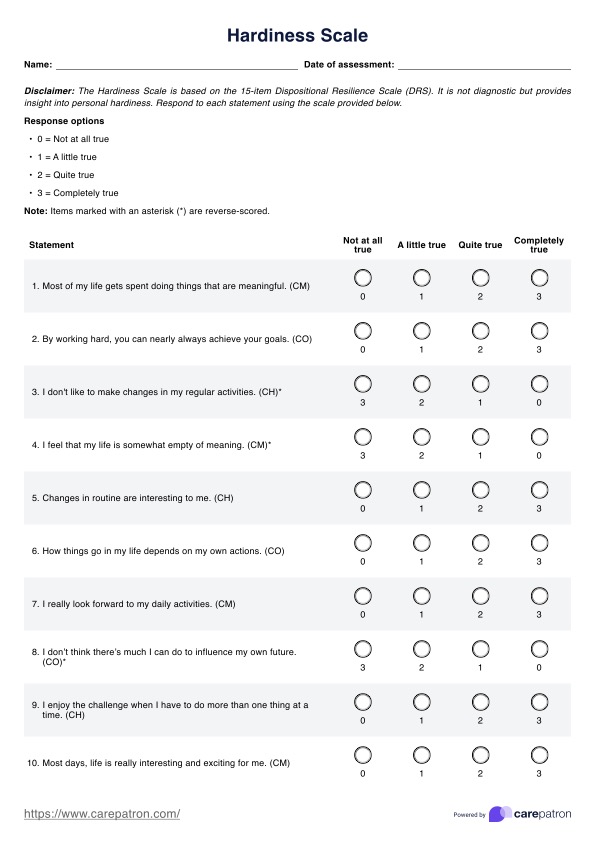The Hardiness Scale is a psychological assessment tool used for measuring hardiness, focusing on an individual’s resilience to stress and their ability to adapt to challenges.
The original Hardiness Scale was developed by Suzanne C. Kobasa. It for measuring hardiness, which reflects their ability to cope with stress and adversity through three dimensions: commitment, control, and challenge. However, there are now more reliable scales today, such as the Dispositional Resilience Scale-15 and the Hardiness Resilience Gauge.
A hardy personality type is characterized by a strong sense of purpose, confidence in controlling life events, and a positive attitude toward challenges. Individuals with this personality type tend to handle stress effectively and view difficulties as opportunities for growth.












